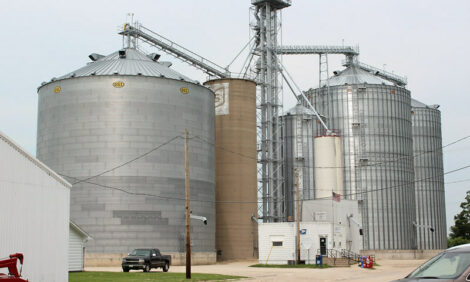



New Bacon Success Story Reminiscent of 1930s
DENMARK - The demand for pork in China is now so great that the situation for Danish Crown is reminiscent of bacon sales to the UK in the 1930s.In the 1930s, Denmark shipped large barrels packed with butter and bacon to the UK. Back then, the market for bacon was insatiable. Today, Danish Crown is experiencing the same phenomenon in the Chinese market.
"The Chinese are crazy about pork. And when such a heavily populated country demands a particular product, we experience a unique situation, the likes of which we haven't seen since our bacon sales to the UK in the 1930s and to Japan in the mid-1970s," says Søren Tinggaard, Deputy Chief Executive in Danish Crown.
In recent years, Søren Tinggaard has been watching developments in China closely, and in his opinion the market is limitless at the moment. For example, if Danish Crown had two million more pig's heads, the company would also be able to sell this volume to the Chinese market.
Knock-on effect on Danish prices
Since the summer, pork prices have increased by 30-40 per cent, and this is one of the reasons why inflation in China is running higher than the rate forecast by the government in Beijing. In the long term, these increases may be significant for Danish consumers, as the price increases in China will push up pork prices in Europe.
"Initially, Danish consumers will not notice anything as the Chinese usually demand other parts of the pig. However, the greater purchasing power of Chinese consumers means they will, to an increasing extent, start demanding the same meat cuts as Europeans, pushing up prices in Europe. A situation we may well soon be facing," says Mr Tinggaard.
In the past few months, the Chinese have, in addition to the usual products such as pig's heads and pig's ears, been buying spare-ribs, streaky bacon, trimmings and fore-ends, which are often used by European meat-processing companies to produce sausages and minced products. This will inevitably lead to more expensive bacon, sausages and spare-ribs, all else being equal.
DKK 0.15 more for farmers
For Danish farmers, China represents significant extra earnings. Simply by selling pig's heads to China instead of Europe, pig producers can get an average of DKK 0.15 more per kilogram. This is further supplemented by trotters, spare-ribs, lungs and other parts of the pig which the Chinese are willing to pay more for.
Difficult to predict the future
In future, Chinese pork production is expected to increase, as the prices paid to Chinese farmers are very high. Once this happens, more feed will be required, with the risk of food prices hitting new highs. Initially, an increase in Chinese production will lead to lower imports, and thus a decline in Danish sales to China; on the other hand, continued growth in the affluent middle classes will help to safeguard the considerable need for imports. It is therefore hard to predict with any certainty the outlook in China.
Another important factor is the Chinese currency, which at the moment is frozen at a lower exchange rate to its true worth. The Chinese government has done this to boost the country's own exports.
However, if the Chinese yuan was tradeable, like the euro, it would increase and appreciate in value.
"A growing middle class is increasing pressure on the government for a floating currency. It might happen tomorrow – or in 25 years' time. This would send pork prices through the roof, and ensure even better returns. So there is every chance of yet another boost," says Mr Tinggaard, adding: "I think that next year China will become Danish Crown's second-largest market after the UK."








